Clothes storage ideas – 10 savvy ways to solve clothing chaos
Get a grip on clothing storage and make getting dressed a daily joy


How often do you find yourself reaching for the same two or three outfits, just because they are closest to hand? You are not alone. Studies reveal the majority of us wear just 20% of our clothing 80% of the time.
The key to unleashing your wardrobe’s full potential and banishing buried piles at the back of the closet is precision-organised clothes storage. But before you rush to the exciting part of seeking out stylish new fitted wardrobe ideas, take a moment to sift through your current threads and weed out the unloved and ill-fitting.
‘Ultimately, a bedroom should be a place for relaxation. If all you can see when you walk in is clutter, clothes, and shoes that need tidying away, it can be hard to relax and switch off,’ says David Norman, Director of Furl. Having a good clothing clear-out is the first step to restoring order. With a decent view of every item you own, more outfits will get their chance to shine.
Clothes storage ideas
Whether you’re looking for bedroom wardrobe ideas, wardrobe organisers or just a few freestanding storage pieces to take the pressure off your current storage set-up, we’ve gathered a wealth of inspiration.
We’ve also chatted to the experts to get the best clothes storage advice for bedrooms big and small.
1. Build in for the win

‘The benefit of built-in clothes storage over freestanding is that it can be completely tailored to fit your space and every part of your room will be taken into consideration, from sloping ceilings to awkward corners,’ says Melissa Denham, Interior Stylist, Hammonds.
As well as resolving issues with wonky walls and uneven floors, built-in storage can be fitted right up to the ceiling, which looks neater and swerves the problem of dust build-up on top of wardrobes. The downside of fitted storage is that it usually costs more, and you can’t take it with you when moving house.
Get the Ideal Home Newsletter
Sign up to our newsletter for style and decor inspiration, house makeovers, project advice and more.
2. Stash off-season wear
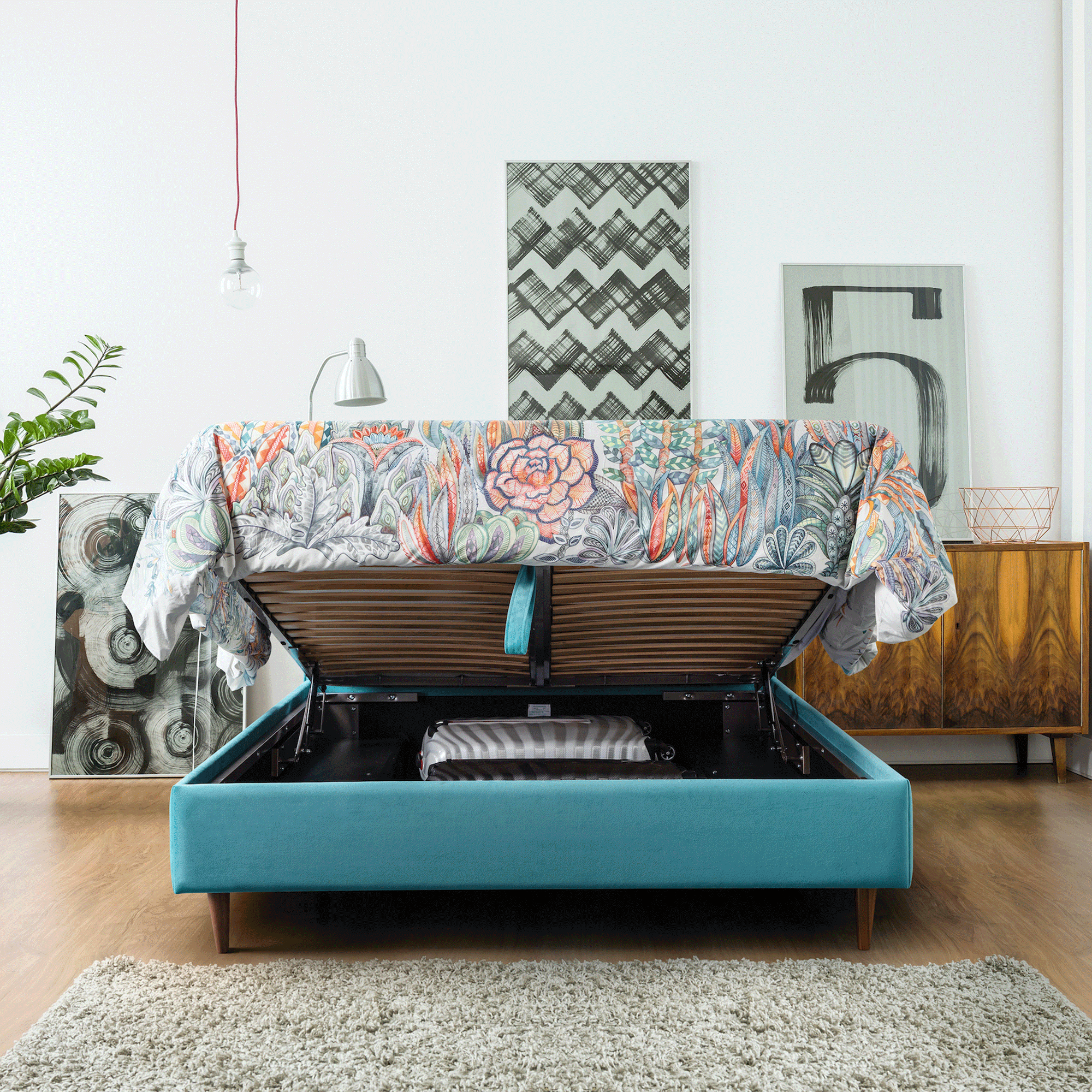
Ottoman-style storage beds offer superior storage capacity compared to drawer-based designs but are not quite as easy to access. For this reason, they are more suitable for stashing away clothing you don’t use on the regs.
‘Storing your off-season wardrobe in an ottoman storage bed is a brilliant use of often under-utilised space, and allows for easy access to your clothes, should there be a sudden need or weather change,’ says David Norman, Director of Furl.
‘Look for models with gas-powered mechanisms, which effortlessly lift-up the mattress and allow it to stay there while you grab the items you need. Underbed storage is much easier than climbing into lofts or traipsing out into freezing garages to find your skiwear, jumpers and winter coats,’ adds David.
3. Keep kids’ clothes under control
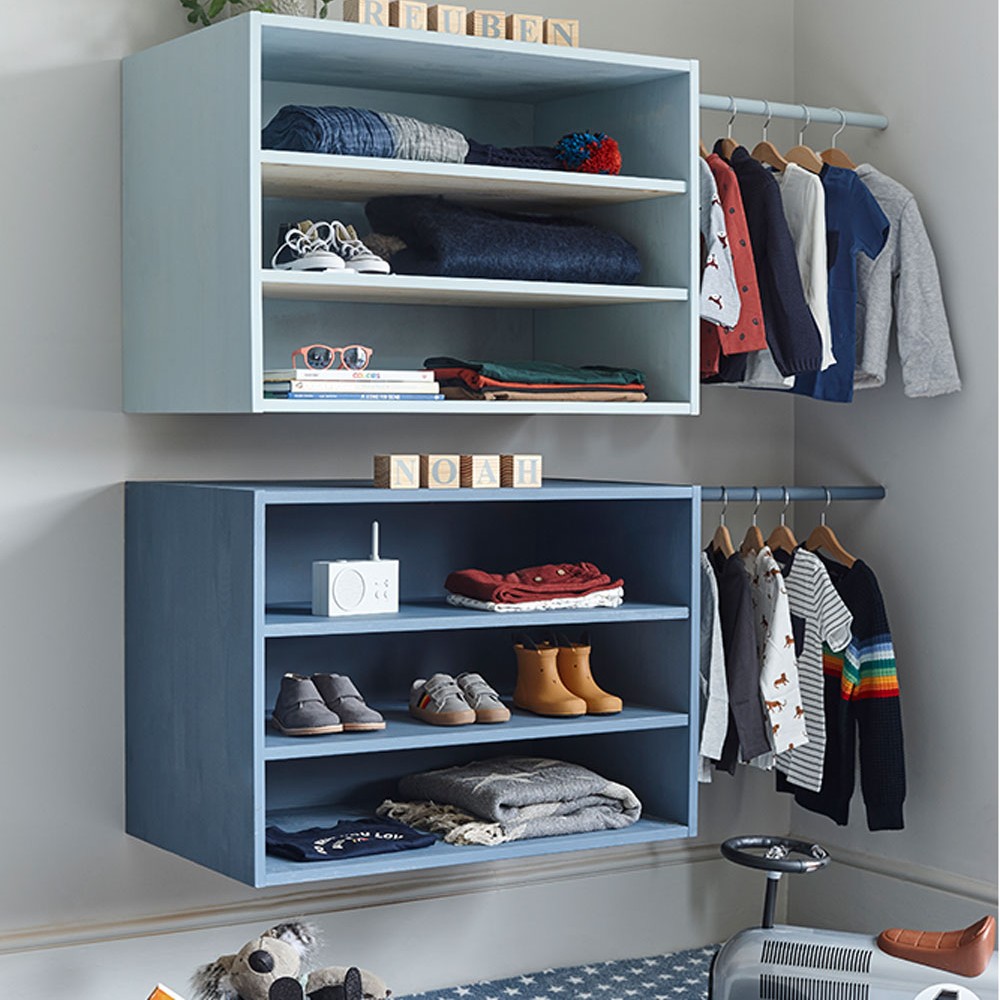
The smallest bedrooms are usually reserved for the smallest family members, and that lack of space makes it even more vital to keep a tight rein on kids’ clothes storage.
‘Children grow so quickly so decluttering anything that doesn’t fit is so important,’ says Kathryn Lord, Childcare Expert and Author of More to Organising. ‘Rotating clothes seasonally will also relieve pressure on space as you’ll only have ‘in-use’ clothes to deal with.’
Encouraging children to be tidy can yield big rewards. ‘Colour coordinating clothes and rolling so every item is visible can help your child be more independent at choosing their own clothes and they won’t chuck everything out to find their favourite blue t-shirt!’ suggests Kathryn.
‘Storing fancy dress clothes away from everyday garments also saves arguments on what is OK to wear to the park (so it won’t get ruined). If you can get fancy dress out of the bedroom completely, you’ll free up cupboard space.’
4. Focus on drawers
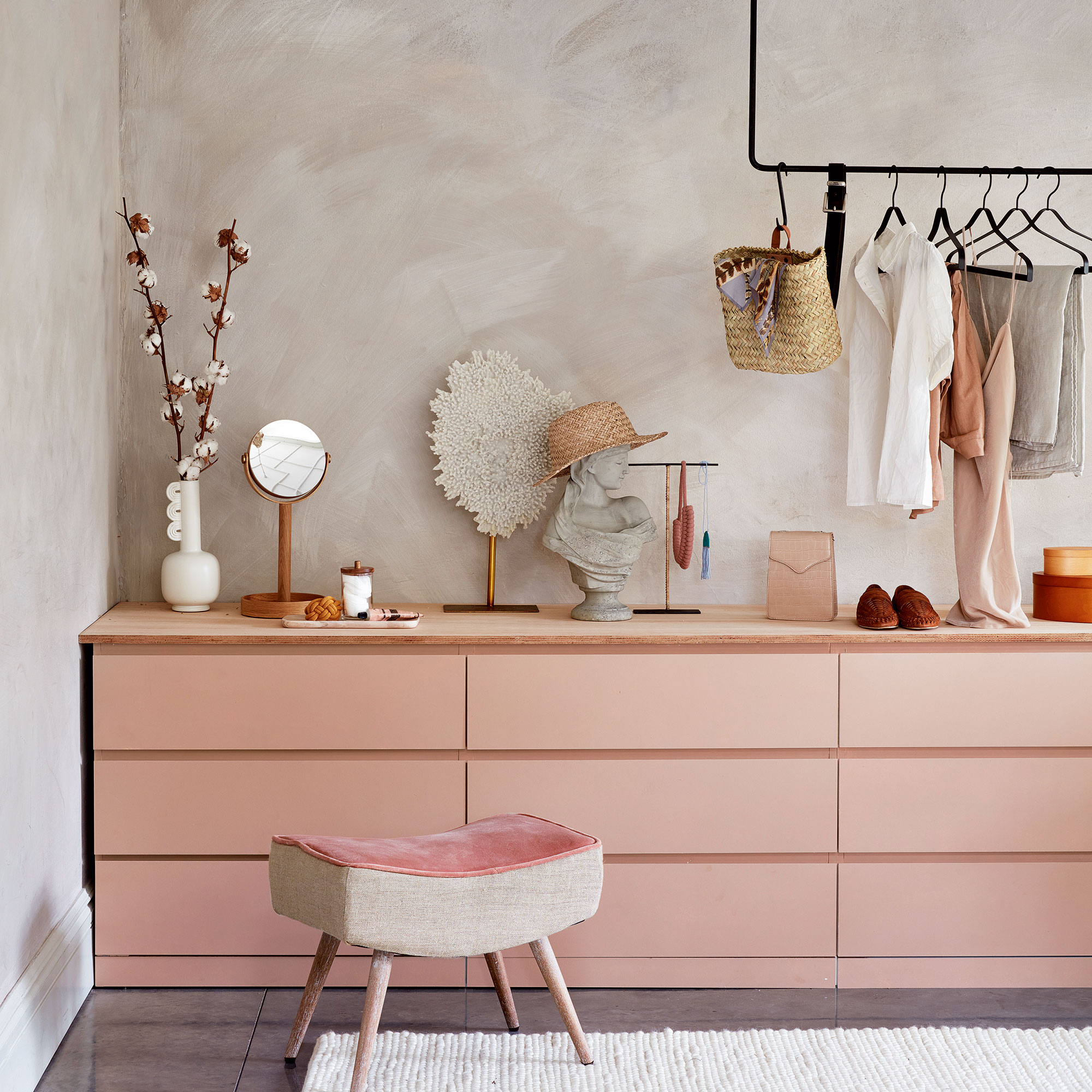
Not all bedroom storage ideas are wardrobe focussed. If you feel depressed by the thought of rows of tall cupboards looming over you while you sleep, the openness of low-level drawer units could prove a more appealing option. The height of your drawer units should be led by the ceiling height, but if you’re looking for a relaxed, spacious feel, don’t go above eye level. A ceiling-hung rail, like the one shown here, is perfect for storing freshly ironed garments ready for use.
‘When planning drawers as your main clothes storage opportunity, the priorities are similar to that of wardrobe storage – essentially you want to make the most of the available space and store items so they’re accessible, not scrunched up,’ says Megan Baker, Head of Design, My Fitted Bedroom.
5. Illuminate interiors
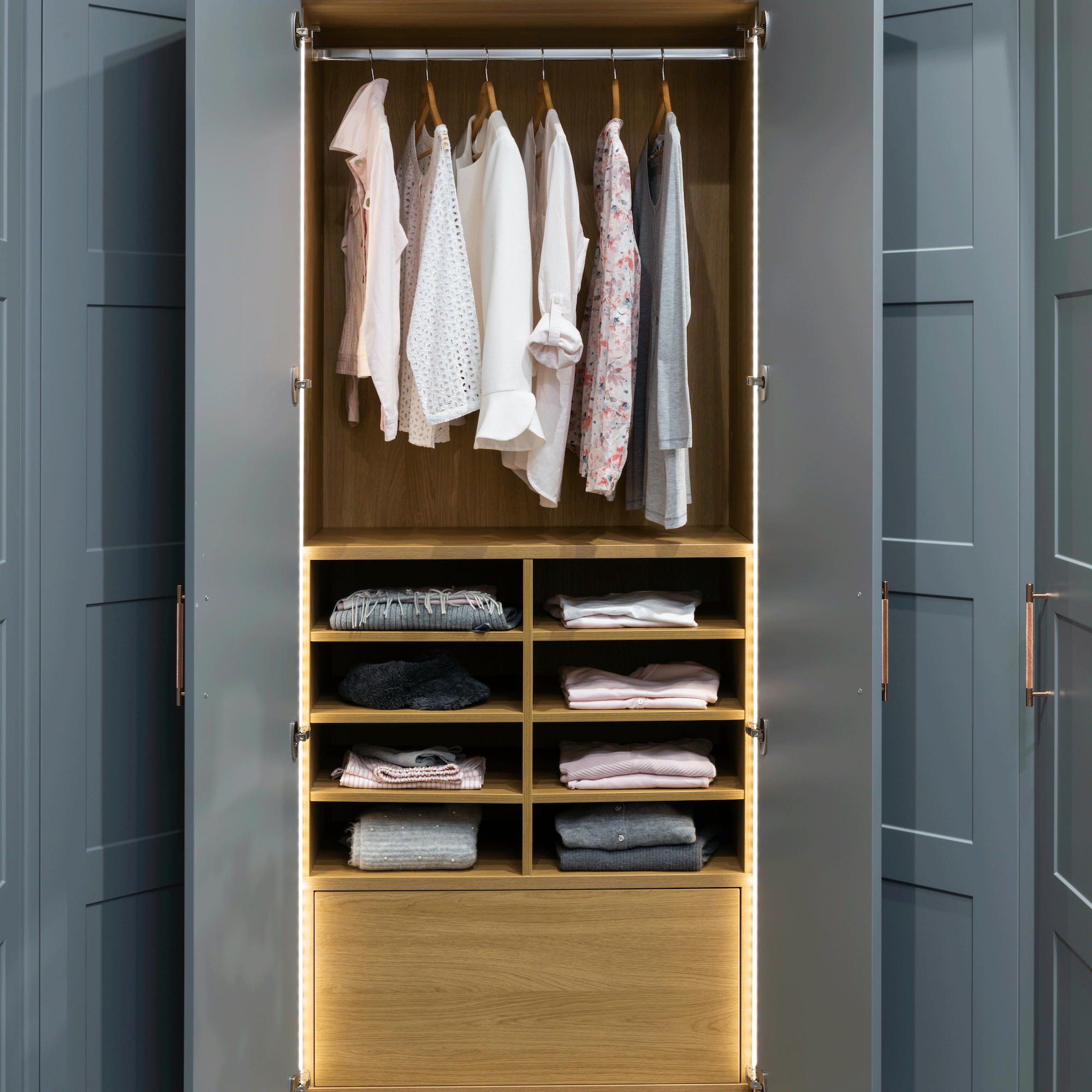
‘Forget hunting around at the back of a dark wardrobe searching for that elusive shoe. With LED strip lights integrated into either side of a wardrobe, everything will be much easier and quicker to find,’ says Josie Medved, Design Project Manager for Laura Ashley at Symphony.
‘To save energy, request LEDs that automatically switch on and off via a sensor that is activated when the door is opened and closed. Illuminated hanging rails are another great feature that will make it easier to locate the perfect outfit.’
6. Choose freestanding rails
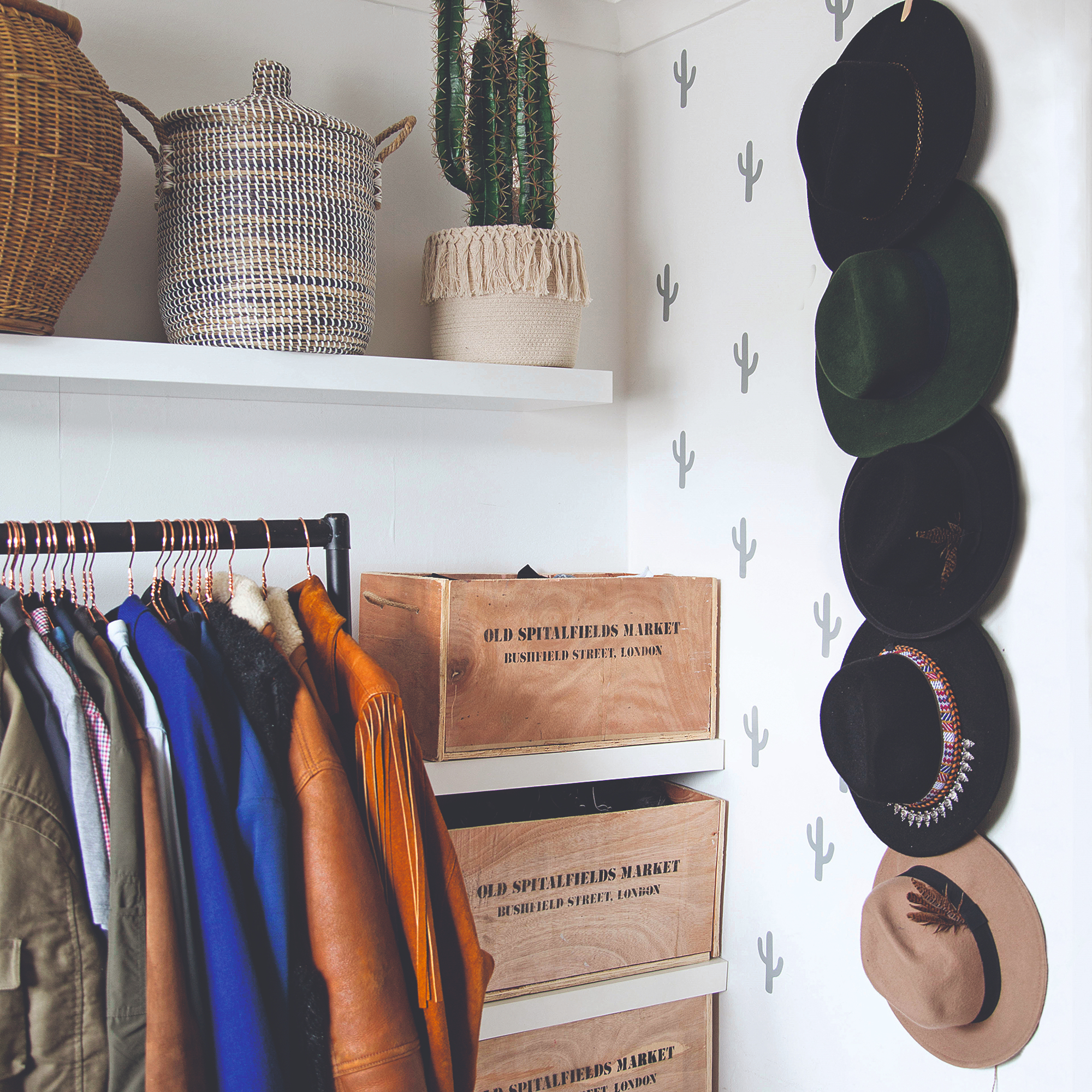
Clothes rails, a.k.a. garment rails, are one of the most cost-effective methods of clothes storage out, and a pretty decent space-saving option, too. Without the encumbrance of bulky frames, freestanding clothes rails can tuck neatly in the corner as a stylish open wardrobe idea out of the way.
If you don’t own many full-length garments, opt for a double rail and fold trousers and skirts over hangers to achieve twice the storage capacity. Since they’re portable, you can try out a few locations to find the perfect spot.
7. Source space-saving doors
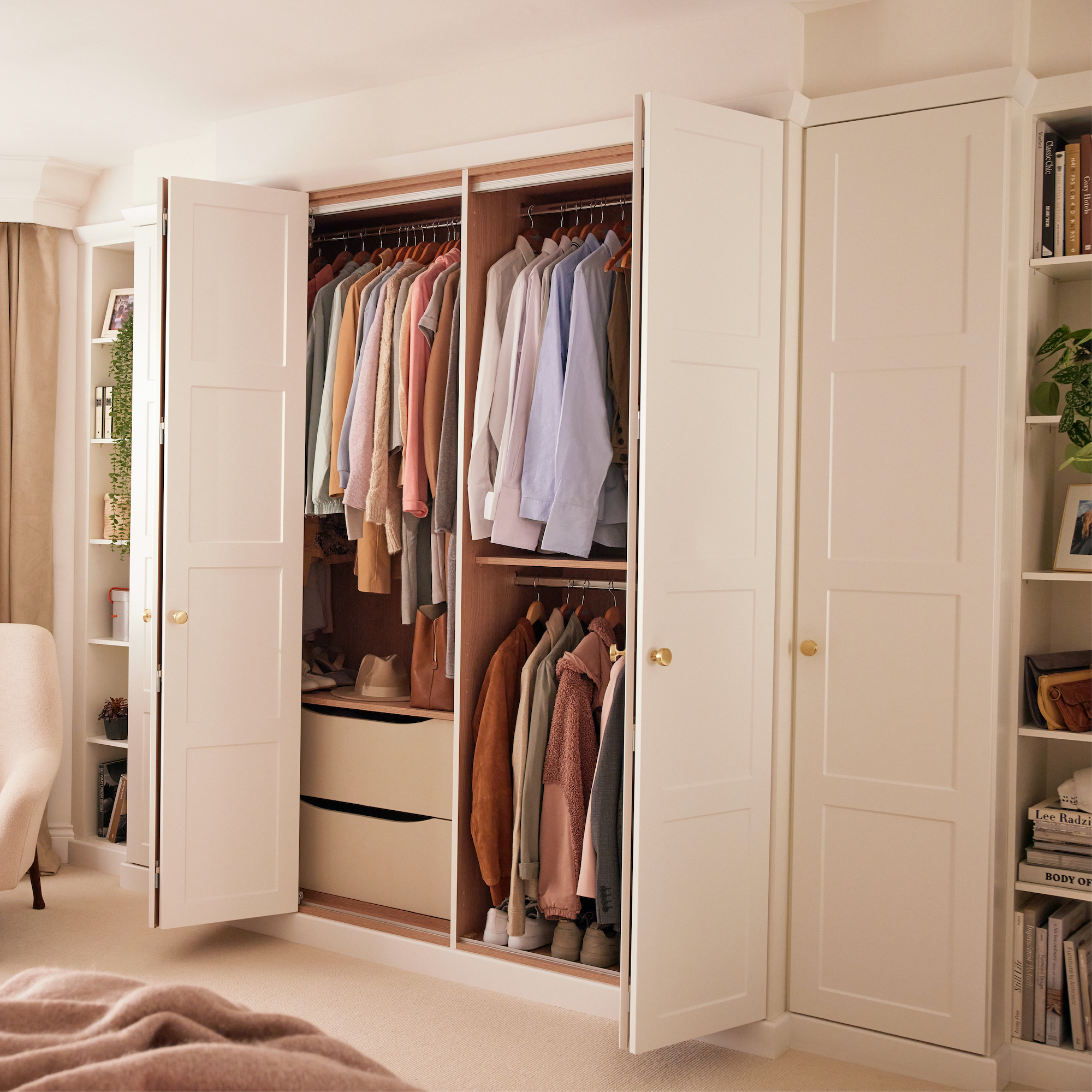
If the area in front of your wardrobes is tight, it’s important to carefully consider how the doors will open. Aim to ensure there’s room to pass when the doors are fully open and also think about the direction they will open. Try to avoid trapping yourself between wardrobe door and wall when reaching in for clothing.
Multiple narrow-width doors can prove less obstructive than a pair of wide doors. But if space is really squeezed, go for bi-folding or sliding doors, or no doors at all! Open wardrobe ideas are very popular right now, allowing colourful couture to become part of your bedroom decor.
8. Think inside the box
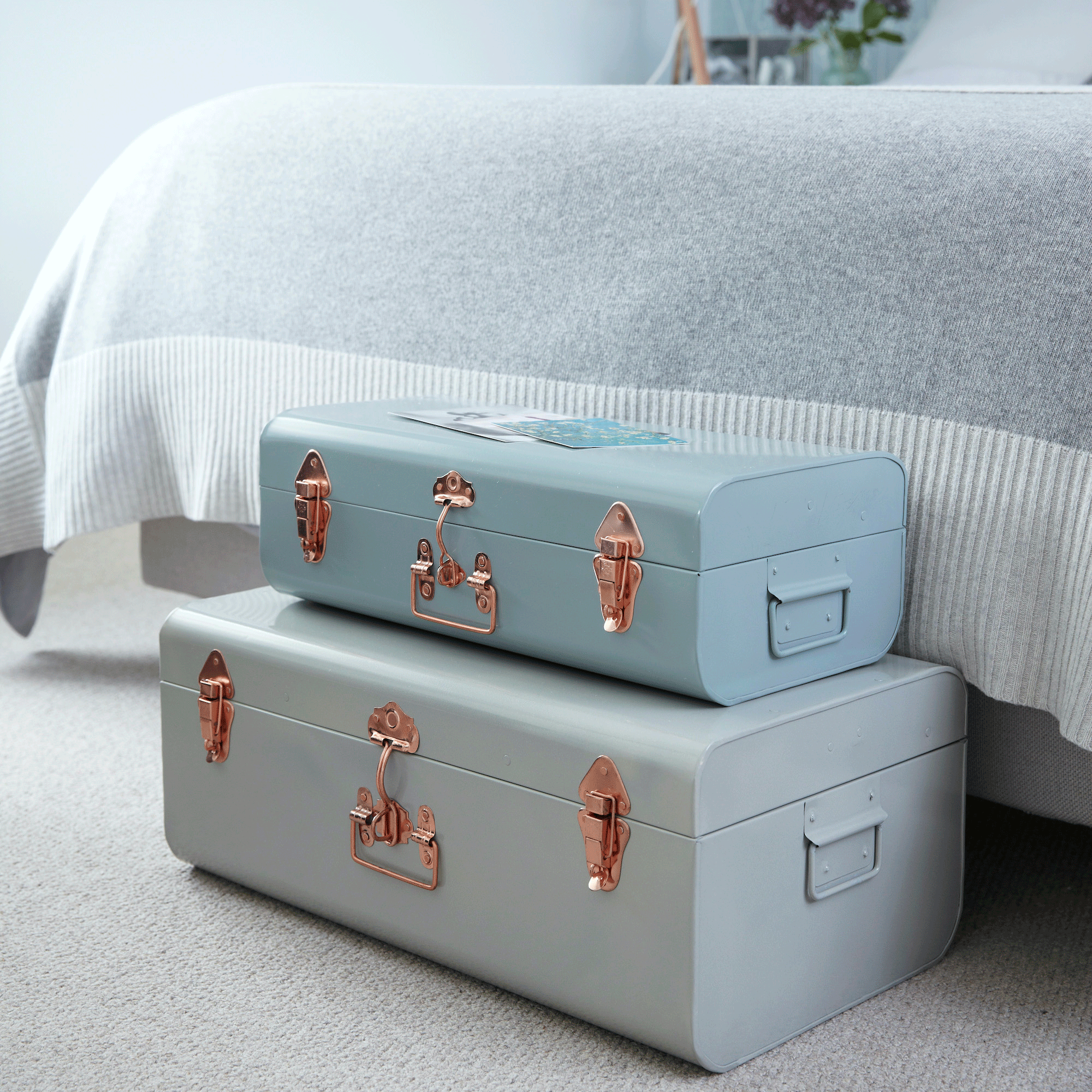
Storage trunks, lidded (and lined) baskets and ottomans are stylish pieces that can be used to add colour and texture to your bedroom, alongside somewhere to stash your chunkiest knitwear of course. They are a great alternative to wardrobe storage ideas, and the foot of the bed is an ideal spot, out of the way but within reach.
A trunk or ottoman with a load-bearing lid also makes the perfect seat for putting on socks.
Consider the weight and ease of access when purchasing. If you’re using a trunk for everyday items like underwear, make sure the lid is lightweight and the catch doesn’t stick. ‘When it comes to storing in trunks or baskets, our top tip is to ‘roll not fold’. Rolling your clothing away is the best way to avoid wrinkles and fit more into your new storage solution without overfilling,’ adds Sam Baldry, Head of Design, at Swoon.
9. Go antique hunting
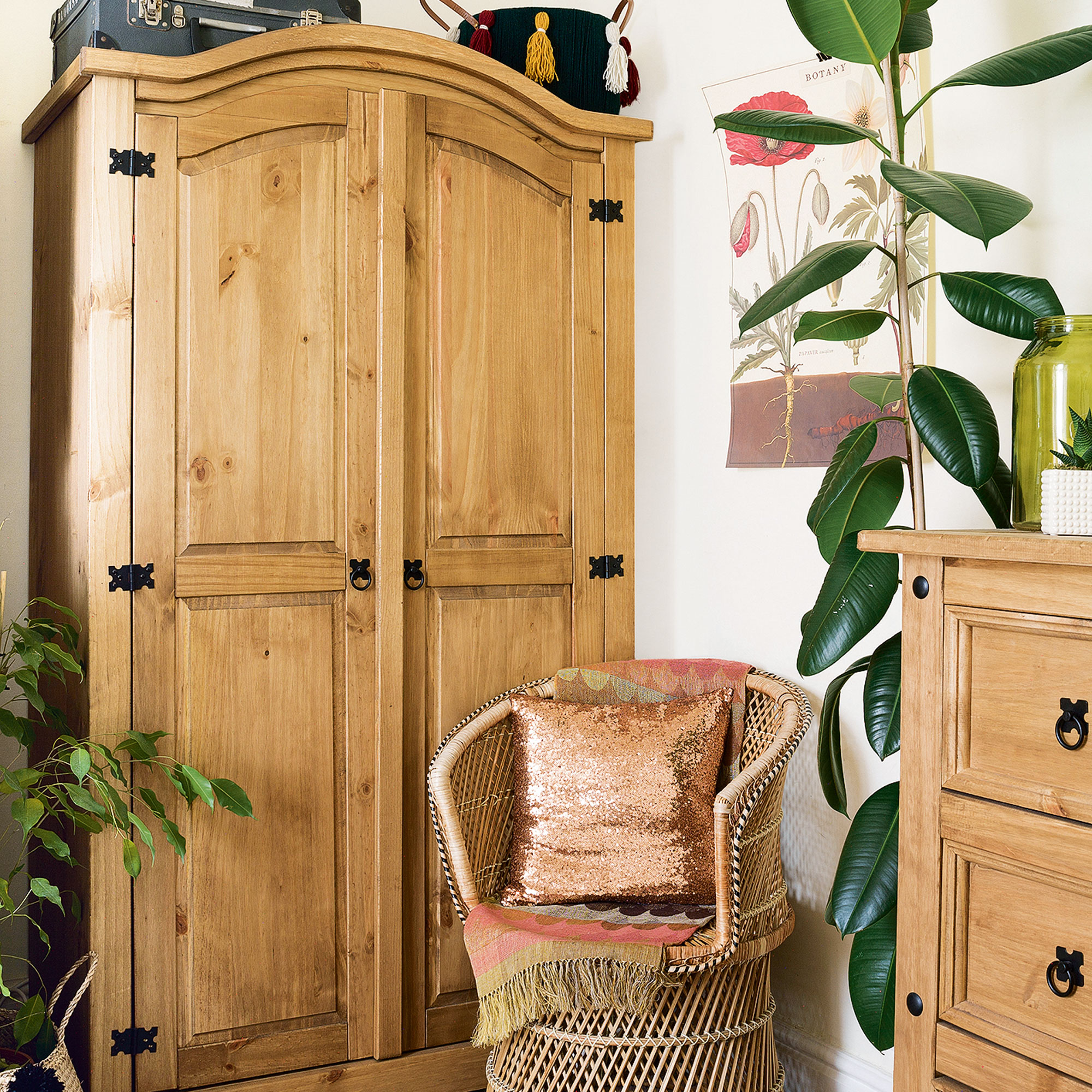
Vintage furniture is a brilliant clothes storage idea that will add unique character and a sense of history. Often made from quality hardwoods using traditional cabinetmaking techniques, vintage furniture can prove impressively robust – ideal for children’s bedrooms. Upcycled furniture ideas, rather than buying new, is environmentally responsible, too.
When shopping for vintage furniture, be sure to check for signs of untreated woodworm (look for fresh sawdust-like dust and tiny holes) Do measure the storage space carefully, especially the width of hanging rails. Furniture made pre-1950s is often much narrower than modern standards and may not accommodate adult-size coat hangers. Be prepared to wax the bottom of drawers to improve running smoothness; you won’t find soft-close drawer runners on antiques!
10. Maximise every inch
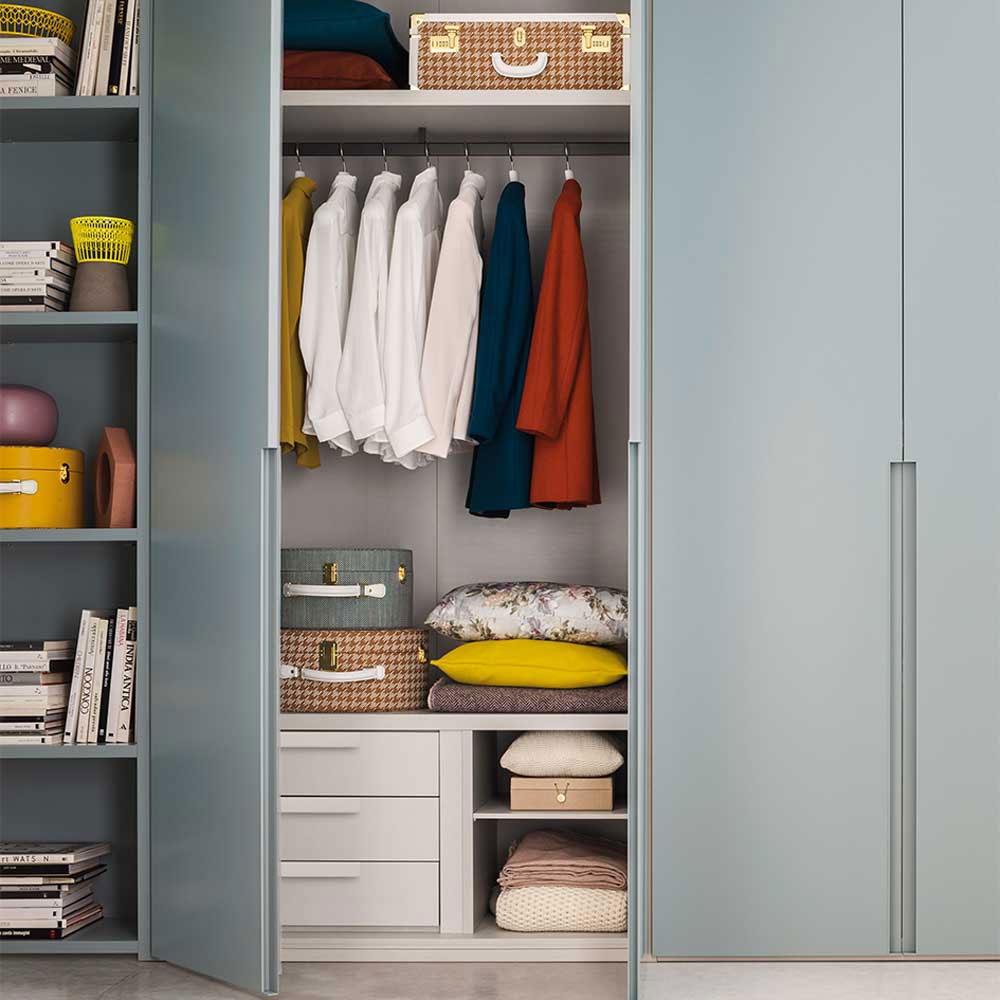
You can own the biggest wardrobe in the world, but if you don’t organise it wisely, chaos can quickly descend. The experts recommend thinking in terms of frequency of use versus ease of access. For example, use the highest cupboards and shelves for out-of-season clothing and luggage, saving the prime real estate of arm’s reach hanging for daily wear.
‘It’s helpful to group items such as jumpers, dresses, jackets etc together, and then colour coordinate them. This way you can quickly and easily find what you want. If there are no internal drawers, source storage boxes and organisers and use these for smaller items like socks and accessories so they don’t get lost,’ adds Juliette Thomas, Founder and Director, Juliettes Interiors.
Is it better to fold or hang clothes?
‘For more casual items such as sweatshirts, jumpers, and certain t-shirts, it’s fine to fold as it won’t put stress on the fabric, and they aren’t likely to get unduly creased. Heavier items such as jumpers and jeans should also be folded as hanging could lead to stretching the fabric,’ says Melissa Denham, Interior Stylist, Hammonds.
‘Using a coat hanger is better for items where it’s more important they don’t look creased, for example clothing like suits and dresses that you would wear to work or social occasions, plus any other lightweight clothing items that may get damaged if left folded in a drawer,’ adds Melissa.
How do you store clothes without a closet or dresser?
If there’s precious little floorspace in your bedroom for anything beyond a bed, make that bed count! ‘Choosing a storage bed over a classic bed frame will allow you to make the most of the space it takes up,’ says Adam Black, Co-founder of Button & Sprung. ‘Drawer storage seamlessly blends within the divan base. Think carefully about your preferred drawer configurations.
‘Storage beds with two large and two small drawers are designed to accommodate bedside tables, while a drawer at the end will suit narrow bedrooms. Alternatively, opt for an ottoman bed – this offers maximum storage, viewable in one glance via a mechanical lifting system. Ideal for larger, bulkier items, storage is located within the full base of the bed rather than split into individual drawers.’

Linda Clayton is a professionally trained journalist, and has specialised in product design, interiors and fitness for more than two decades. Linda has written for a wide range of publications, from the Daily Telegraph and Guardian to Homes & Gardens and Livingetc. She has been freelancing for Ideal Home Magazine since 2008, covering design trends, home makeovers, product reviews and much more.
-
 My go-to Ninja coffee machine is on sale for Easter weekend
My go-to Ninja coffee machine is on sale for Easter weekendIt makes coffee shop quality achievable at home
By Molly Cleary
-
 When to plant out annual flowering plants for vibrant, colourful garden borders – and give them the best start, according to experts
When to plant out annual flowering plants for vibrant, colourful garden borders – and give them the best start, according to expertsNot sure when to plant out annual flowering plants? We've got you covered...
By Kayleigh Dray
-
 I'm a kitchen decor editor and didn't like this tableware trend - until I saw H&M Home's designer-look plates
I'm a kitchen decor editor and didn't like this tableware trend - until I saw H&M Home's designer-look platesThey made it easy to justify a new crockery set
By Holly Cockburn